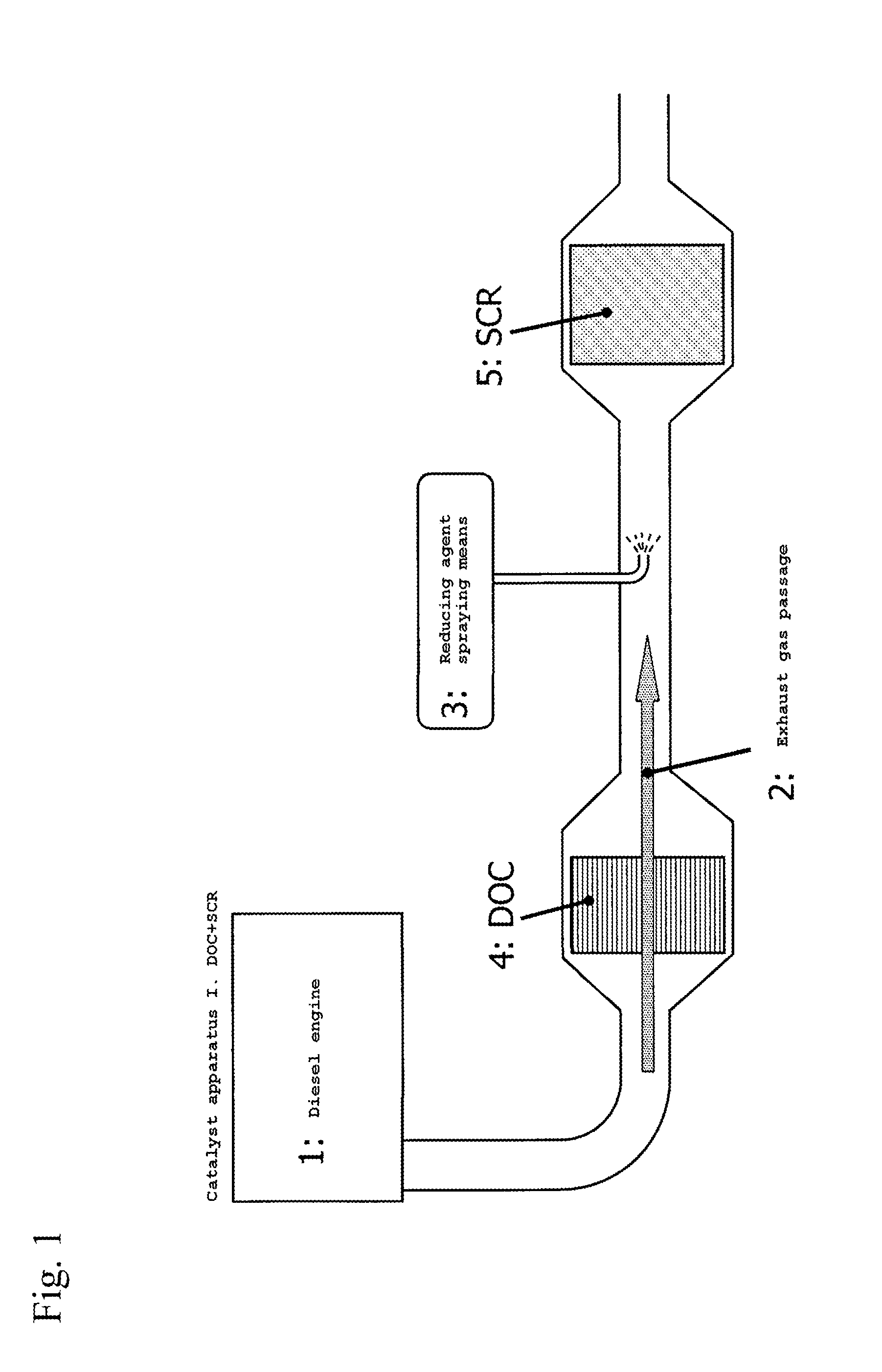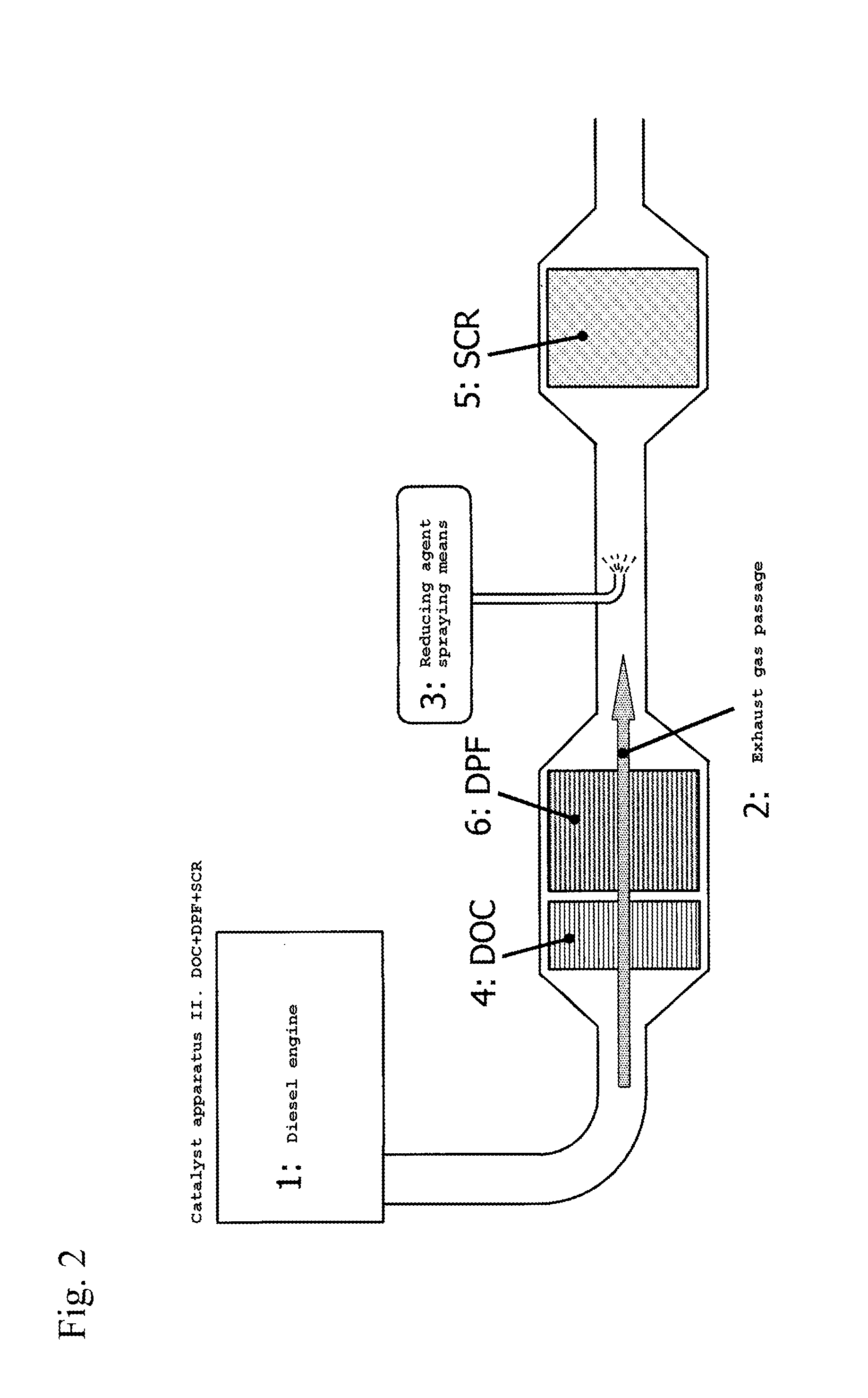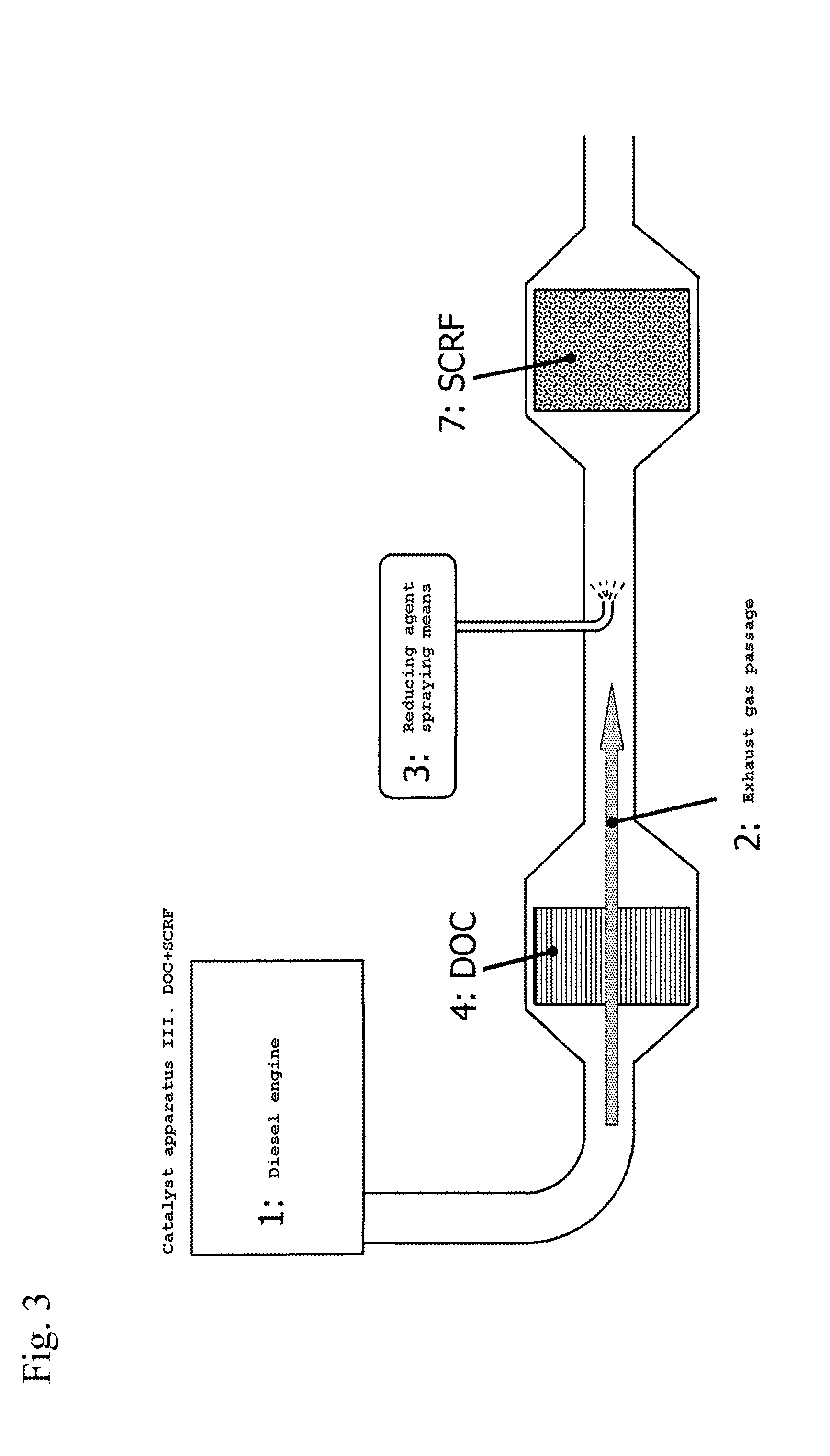Off gas purification device
a technology of exhaust gas purification and purification device, which is applied in the direction of physical/chemical process catalysts, metal/metal-oxide/metal-hydroxide catalysts, and separation processes. it can achieve the enhancement of fuel efficiency in a diesel engine, the effect of effective use and purification performance of the scr catalys
- Summary
- Abstract
- Description
- Claims
- Application Information
AI Technical Summary
Benefits of technology
Problems solved by technology
Method used
Image
Examples
example 1
[0224]Onto 300 g of alumina powder (γ-alumina, containing 2% by weight of La, specific surface area: 200 m2 / g) as a base material, an ethanol amine solution of platinum hydroxide (IV) as a raw material of the noble metal component, was impregnated and supported, so as to attain 0.75% by weight in Pt equivalent, to obtain Pt-supported alumina powder. Then, onto the above Pt-supported alumina powder, an aqueous solution of palladium nitrate was impregnated and supported, so as to attain 0.25% by weight in Pd equivalent, to obtain Pt—Pd-supported alumina powder (Pt:Pd=3:1). And, the Pt—Pd-supported alumina powder, commercial refined sugar (10% by weight of the alumina powder) and water were put into a ball mill and milled till specified particle diameter is attained, to obtain slurry.
[0225]Subsequently, an integral structure-type substrate, that is, a honeycomb flow-through-type cordierite substrate (300 cells / 8 mil, a diameter of 24 mm, a length of 66 mm), was immersed into this slurr...
example 2
=A Lower Layer=
[0230]An aqueous solution of platinum nitrate and an aqueous solution of palladium nitrate were mixed, as raw materials of the noble metal component, to obtain a Pt—Pd mixed solution. Here, ratio of platinum and palladium was set at 5:1, in weight ratio.
[0231]Next, onto 300 g of alumina powder of Example 1, as a base material, the above-described Pt—Pd mixed solution was impregnated and supported, so as to attain 0.68% by weight in the noble metal equivalent, to obtain Pt—Pd-supported alumina powder.
[0232]And, the Pt—Pd-supported alumina powder and water were put into a ball mill and milled till specified particle diameter is attained, to obtain slurry.
[0233]Subsequently, an integral structure-type substrate, that is, a honeycomb flow-through-type cordierite substrate (300 cells / 8 mil, a diameter of 24 mm, a length of 66 mm), was immersed into this slurry, and coated so as to attain a catalyst supported amount of 110 g / L per unit volume, by a wash-coat method, then dr...
example 3
[0237]An aqueous solution of platinum nitrate and an aqueous solution of palladium nitrate were mixed, as raw materials of the noble metal component, to obtain a Pt—Pd mixed solution. Here, ratio of platinum and palladium was set at 3:1, in weight ratio.
[0238]Next, onto 300 g of alumina powder of Example 1, as a base material, the above Pt—Pd mixed solution was impregnated and supported, so as to attain 1.0% by weight in the noble metal equivalent, to obtain Pt—Pd-supported alumina powder.
[0239]After that, oxidation catalyst DOC (3) (amount of the noble metal: 2.0 g / L) was obtained similarly as in DOC (1) of Example 1, except that refined sugar was excluded from the raw material of slurry components.
[0240]Free Pt particle ratio (%) of the obtained oxidation catalyst DOC (3) was measured by the above method, and the result is shown in Table 1.
[0241]Next, the Pt scattering test and subsequent Pt concentration measurement were performed. Specifically, they were performed under the same...
PUM
| Property | Measurement | Unit |
|---|---|---|
| bed temperature | aaaaa | aaaaa |
| particle diameter | aaaaa | aaaaa |
| temperature | aaaaa | aaaaa |
Abstract
Description
Claims
Application Information
 Login to View More
Login to View More - R&D
- Intellectual Property
- Life Sciences
- Materials
- Tech Scout
- Unparalleled Data Quality
- Higher Quality Content
- 60% Fewer Hallucinations
Browse by: Latest US Patents, China's latest patents, Technical Efficacy Thesaurus, Application Domain, Technology Topic, Popular Technical Reports.
© 2025 PatSnap. All rights reserved.Legal|Privacy policy|Modern Slavery Act Transparency Statement|Sitemap|About US| Contact US: help@patsnap.com



